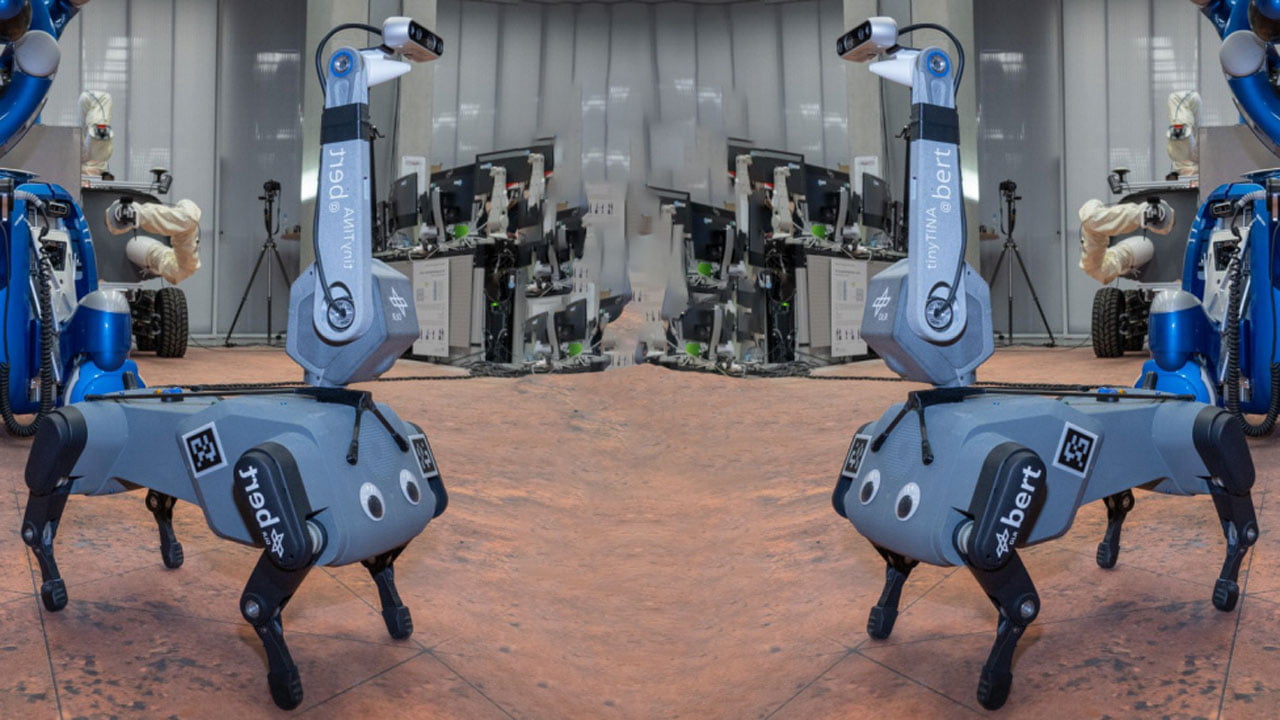First Successful Remote Control Robot With Legs Not Wheels’ In Space

Successful Remote Control Robot With Legs Not Wheels’ In Space. An astronaut aboard the ISS at an altitude of 400 km is expected to be able to navigate terrain with obstacles such as large stones. for a four-legged robot from a German lab. Expected to build and maintain bases on the Moon and Mars.
A test to remotely control a dog-shaped quadrupedal robot on the Earth’s surface from the International Space Station (ISS) orbiting at an altitude of 400 km was successful. This is the first time that a robot with legs other than wheels has been remotely controlled from space.
Robots equipped with legs can easily overcome difficult terrain, and there is a growing possibility that in the future, such robots will be dispatched to the Moon or Mars and then have humans remotely control them from space to perform various exploration and pioneering activities.
Recently, the German Aerospace Center (DLR) announced that an astronaut aboard the ISS succeeded in a mission to remotely control the quadrupedal robot ‘Bert’ (pictured) in the DLR laboratory located in Oberpaffenhofen, Germany. Bert is a dog-shaped robot.
The biggest significance of this successful test is that it was the first time in history that a robot with legs was remotely controlled in space. Until now, all robots that were remotely controlled by transmitting radio waves from space to Earth or from Earth to space had wheels rather than legs. A representative example is the Mars ground exploration vehicle ‘Perseverance’.
When a wheeled robot encounters a stone that is too large while performing a mission in a celestial body outside the Earth, the body may fall over or its path may be blocked, making it impossible to drive at all. However, a robot with legs can move by stepping into a gap even if there are stones in front. It’s the same way that on rough mountain roads, it’s better to walk rather than bike.
DLR issued an official explanation regarding the results of this test and explained, “Future bases on the Moon and Mars will be built and maintained by robots remotely controlled by astronauts.” This means that when exploring a celestial body outside the Earth with rough terrain, people do not have to be dispatched to the site every time and risk their lives.
DLR added, “By combining artificial intelligence (AI), it will be possible for one astronaut to control multiple robots at once.”
See More:
Why In China’s Apple And Samsung Smartphones Become A Graveyard
Robotization Of Humans: Is Musk’s ‘Neuralink’ An Innovation Or A Fraud
Leave a Comment